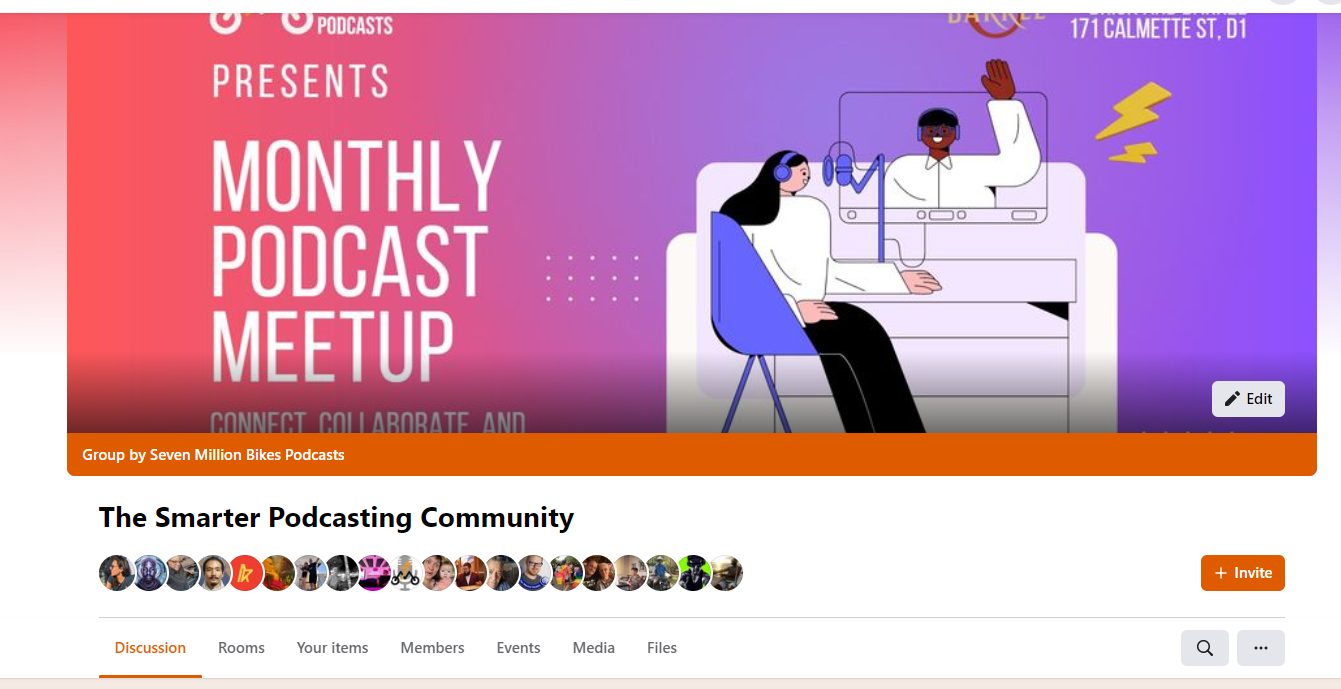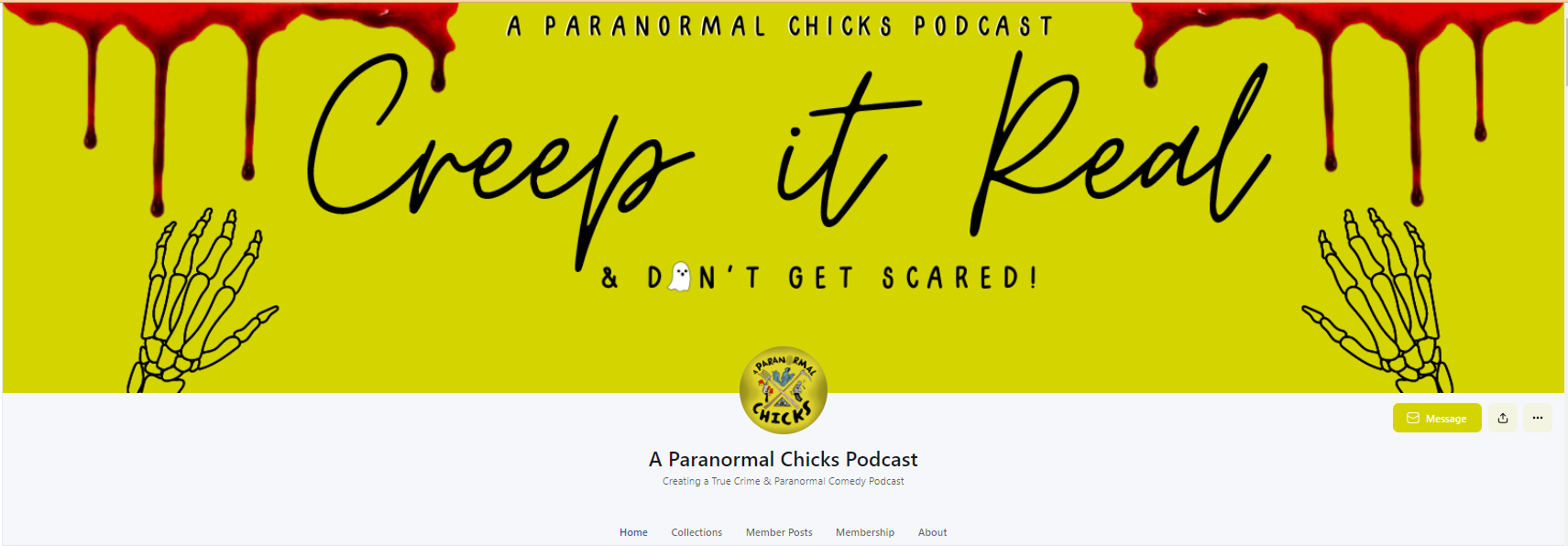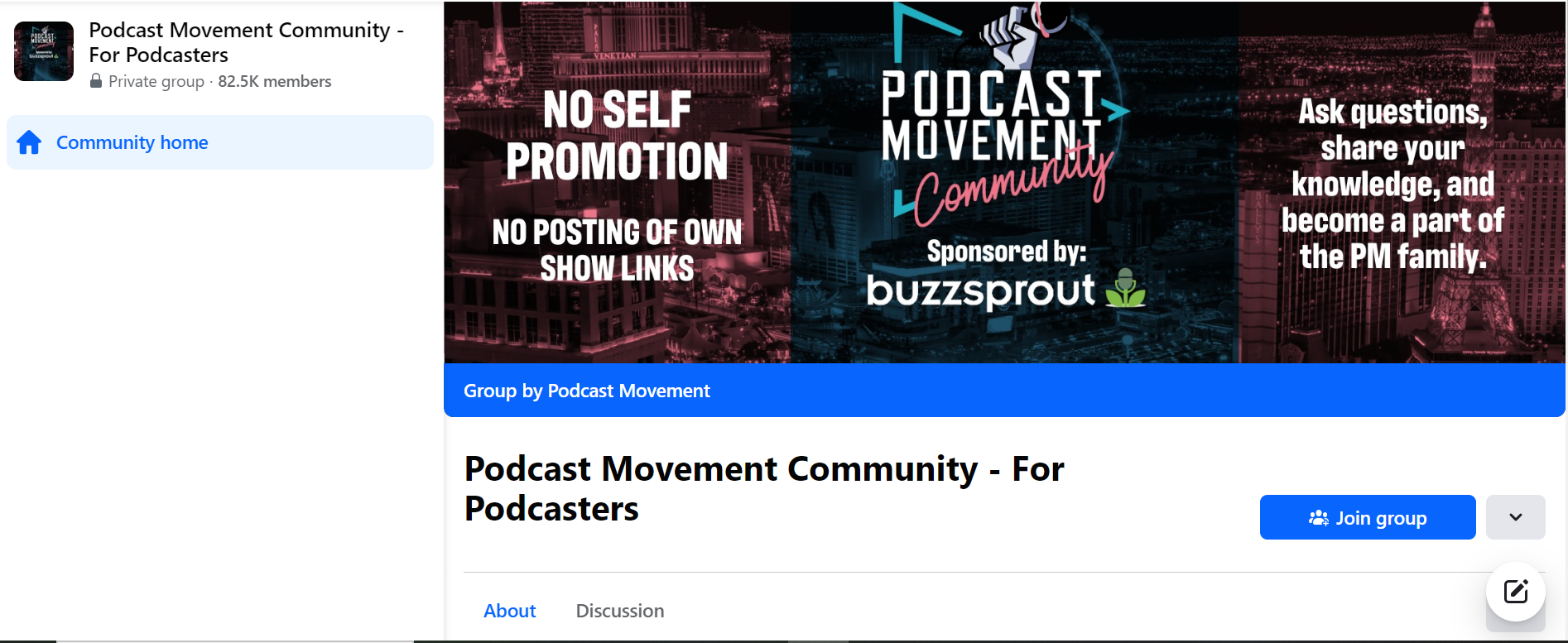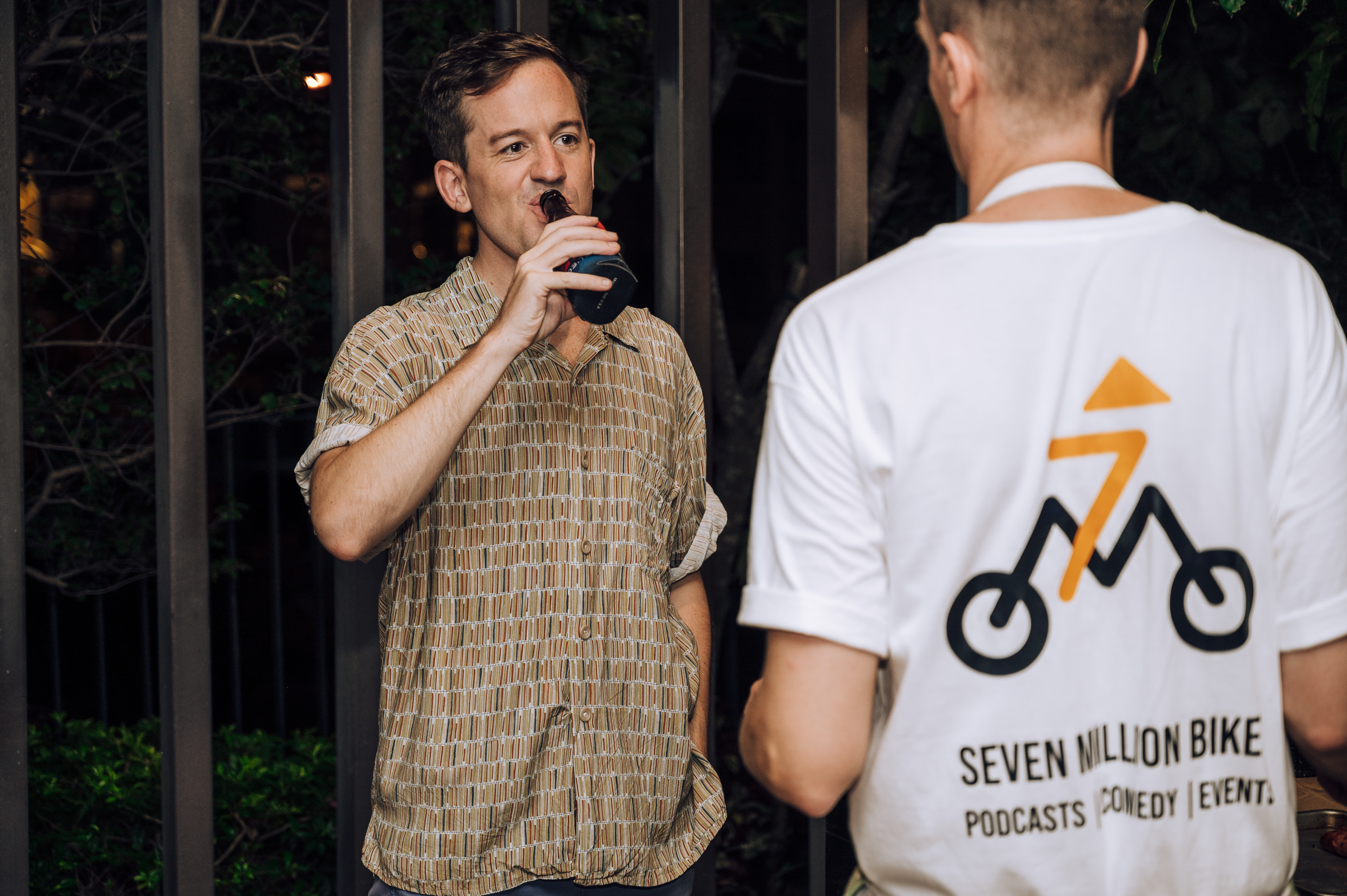What truly sets exceptional podcasts apart from the rest is their ability to foster a thriving podcast community. Building a podcast community is an essential element that can significantly impact the success and longevity of your show.
I’m Niall Mackay, founder of Seven Million Bikes Podcasts, and a podcast host. When I first started, the reason why I started my first podcast – A Vietnam Podcast, was to connect with people and hear their stories. I believe other podcasters have this idea, too. That’s why a community is important for your podcast, where voices can be heard, ideas can be exchanged, and friendships can be forged.
Your podcast community is the beating heart of your valuable content, the driving force behind your growth, and the sounding board for your ideas. Building this community wasn’t just about numbers or metrics; it was about fostering a sense of belonging and camaraderie.

The Significance of Building a Podcast Community
Beyond the spoken words and recorded narratives, building a community around your podcast is what truly sets it apart and propels it to new heights. It’s not just about broadcasting; it’s about forging connections, fostering engagement, and creating a loyal tribe of podcast listeners who are not just consumers but active participants in your podcast journey.
Want to know how to measure your podcast success? Checking the size and engagement level of your podcast community is one of the best ways.
What is a Podcast community?
At its core, a podcast community represents a collective of individuals who share a common interest, passion, or curiosity that your podcast addresses. These individuals are more than just passive listeners; they are your most loyal listeners, advocates, supporters, and companions on your podcasting adventure.
Amplifying Your Voice
Podcast communities serve as powerful amplifiers for your message. Word-of-mouth recommendations are gold in the podcasting world. When your podcast community members enthusiastically share your show with their friends, family, and social circles, it can lead to exponential growth.
These personal recommendations carry weight and credibility, making potential new listeners more likely to give your podcast a try. Pelling endorsements often come from real people who genuinely appreciate your content.

Enhanced Engagement
Podcasting is not a one-way communication channel. It’s an interactive medium where your audience can participate, share their thoughts, and engage with your content.
A strong podcast community ensures that engagement levels remain high, the active members join in community discussions about your podcast episodes, provide feedback, and even suggest topics for future shows.
As podcast creators, there’s nothing more valuable than feedback and suggestions from your audience. By actively listening to your community, you can tailor your content to better meet their needs and preferences. In essence, they become collaborators in shaping your podcast.
This two-way conversation fosters a sense of belonging and involvement.
Increased Loyalty
Loyalty is the bedrock of a successful podcast. When you build a community around your show, you’re nurturing a group of dedicated listeners who feel a deep connection to your content. These loyal listeners are more likely to stick around for the long haul, eagerly awaiting each new episode and supporting your podcast in various ways, such as leaving positive reviews, sharing episodes, and even contributing financially.
Choosing the Right Platform for Podcast’s Community
Each platform offers its own set of advantages and drawbacks, and the choice largely depends on your podcast’s niche, your audience’s preferences, and your community-building goals.
Free Community Platform
Free podcast communities are open to anyone interested in joining without any financial commitment. These communities often rely on popular social media platforms and forums to connect podcasters and listeners.
Some popular free platforms for you to choose from:
- X (Twitter)
- Reddit

Free online communities offer:
- Accessibility: Free communities are open to anyone interested in joining, making it easier to attract a broader podcast audience.
- Ease of Entry: There are no financial barriers, allowing members to join without hesitation.
- Large Membership Potential: You can potentially amass a significant number of members due to the lack of a paywall.
- Exploratory Phase: New listeners can explore your content without committing financially.
Besides, they have some drawbacks like the potential for spam and limited revenue.
Paid Community Platform
On the other hand, paid platforms require members to make a financial commitment to access exclusive content, benefits, or interactions.
The pros of paid community:
- Higher Engagement: Paid members are often more committed and engaged, as they have invested in the community.
- Steady Revenue: A paid model can provide consistent income, helping sustain your podcast and community efforts.
- Quality Over Quantity: Paid communities tend to attract members who genuinely value your content and are willing to pay for exclusive benefits.
- Reduced Spam: Financial commitment can deter disruptive behavior.
But remember that paid members may expect premium content or perks, putting pressure on you to deliver consistently.
Examples
- Patreon
Many podcasters use Patreon to create paid memberships. Subscribers pay a monthly fee in exchange for rewards like bonus episodes, early access, or exclusive Q&A sessions. Popular podcasts like “Chapo Trap House” offer premium content to their Patreon supporters.
I was so impressed by our client’s A Paranormal Chicks Patreon page that I signed up myself!

- Discord Premium Servers
Podcasters can create premium Discord servers that require a paid subscription to access. These servers often include private chat rooms, direct interactions with the podcasters, and exclusive content. The podcast “The Misfits” offers a premium Discord server to its fans.
- Substack
While Substack is primarily known for newsletters, some podcasters use it to offer premium podcast content to paid subscribers. Subscribers receive access to bonus episodes or ad-free content. Podcasters like Sam Harris offer premium podcast subscriptions through Substack.
Facebook Group
Besides promoting your podcast on Facebook, creating a group is a great way to build your community.
Many podcasters create free Facebook groups where listeners can discuss episodes, share feedback, and engage in discussions. These groups are accessible to anyone with a Facebook account. An example is the “Podcast Movement Community” on Facebook, where fellow podcasters exchange ideas and recommendations.

The biggest advantage is accessibility, given Facebook’s extensive user base. It provides a space where members can engage in discussions, and share content like podcast episodes, images, and links.
The use of discussion threads allows for organized conversations around specific topics or episodes. Additionally, Facebook can send notifications to members, ensuring that they stay engaged with their own community.
However, privacy concerns and potential changes in Facebook’s algorithm affecting post visibility are drawbacks to consider. Effective moderation is essential to prevent spam and maintain a healthy community.
Discord Community
Discord is an online community well-suited for real-time discussions. It allows for organized conversations through text channels, voice channels, and private messaging. Discord offers a sense of community with its real-time interactions, making it ideal for live events, Q&A sessions, or casual chats. Robust moderation tools ensure a respectful environment.
However, there is a learning curve, and members need to be online simultaneously for live interactions, which may not suit everyone. Discoverability can also be challenging compared to platforms like Facebook.
Examples of Successful Communities on Discord:
- The Official Misfits Discord
- Kinda Funny Games Daily
- MBMBaM Discord
X, previously known as Twitter
X, previously known as Twitter, provides a public platform for podcasters to connect with listeners and fellow podcasters. The advantage here is the ease of public engagement. Hashtags enhance discoverability, allowing podcasters to join broader discussions. Direct interaction with the audience is possible, enabling responses to questions and sharing behind-the-scenes content.
However, X’s character limit can be restrictive for in-depth discussions, and the high volume of tweets can cause messages to get lost. Public platforms like X can also attract negative interactions.
Examples:
- #PodernFamily
- #PodcastChat
- #LadyPodSquad
These platforms offer diverse ways to build and engage with your podcast community, and the choice often depends on your target audience, content style, and your personal preferences as a podcaster.

Activities – Different Ways to Connect with Your Community
Now I guess you have your choice about community platforms. Let me tell you what can you do to build relationships with your dedicated audience.
- Live Q&A Sessions
Host live events or question-and-answer sessions where listeners can interact with you directly. This could be done through social media platforms like Instagram Live, Twitter Spaces, or a dedicated webinar tool. It’s a great way to address listener questions and provide real-time responses.
- Contests and Giveaways
Organize contests or giveaways related to your podcast content. Encourage listeners to participate by sharing their experiences or creative responses. This not only engages your existing audience but can also attract new listeners through word-of-mouth.
- Guest Listener Episodes
Allow dedicated listeners to contribute to your podcast by featuring them in special episodes. They can share their own stories or insights related to your podcast’s theme. This fosters a sense of inclusivity and community involvement.
- Community Challenges
Create fun challenges or missions related to your podcast. Encourage your audience to participate, share their results, and discuss their experiences within your community. Challenges can be anything from scavenger hunts to creative content creation.
- Exclusive Content for Community Members
Reward your most engaged listeners with exclusive content. This could be bonus episodes, behind-the-scenes glimpses, or early access to upcoming episodes. Use platforms like Patreon to set up a membership system for premium content.
- Virtual Events
Organize virtual events such as webinars, workshops, or panel discussions related to your podcast’s niche. Invite experts or guest speakers to participate and engage with your community. Platforms like Zoom or Crowdcast can facilitate these events.
- Feedback and Suggestions
Actively seek feedback and suggestions from your audience. Ask them what topics they’d like to hear, how you can improve, or what segments they enjoy the most. Show that you value their input by implementing their ideas when possible.
Create interactive content like polls, quizzes, or surveys related to podcast topics. Share the results and insights with your community, sparking discussions.
- In-Person Events
In-person events are a powerful way to forge deeper connections within your podcast community. While podcasts are primarily a digital medium, bringing your listeners together in the physical world can create lasting impressions and strengthen bonds.
They provide an excellent opportunity for your community members to network and connect with like-minded individuals who share their interests. Encourage attendees to exchange contact information and follow up with one another after the event.

- Email Marketing
Podcast email marketing remains a valuable tool for maintaining a direct line of communication with your podcast community. While social media platforms come and go, your email list is a more stable and dependable asset.
Be consistent with your email communications, whether it’s weekly newsletters or event updates. Personalize your messages by addressing subscribers by name and tailoring content to their interests.
General Guide – Build a Strong Podcast Community
Step 1: Know your Audience
A “podcast avatar” represents an ideal listener who embodies the characteristics, preferences, and demographics of your target audience. Understanding your target audience is the cornerstone of community building for your podcast.
- Alignment: Knowing your audience allows you to align your content, messaging, and community-building efforts with their expectations and preferences.
- Engagement: Understanding what motivates your audience helps you create engaging content and activities that cater to their interests. Engaged listeners are more likely to become active community members.
- Growth: Targeting the right audience ensures that your community attracts individuals genuinely interested in your podcast’s niche. This leads to organic growth as satisfied community members refer others who share their interests.
Step 2: Select the Platform
Use the insights gained from understanding your audience to choose the most suitable platform, such as Facebook Groups, Discord, or Twitter. Each platform has its strengths, so consider your audience’s behavior and preferences.
Step 3: Create the Community
Follow the platform’s guidelines to create your community. For example, if you’re setting up a Facebook Group, click the “Create Group” option, choose a name, privacy settings (public, private, or secret), and add an engaging cover photo and description.
Personalize your community by adding relevant sections, categories, or topics. This segmentation makes it easier for members to find discussions that interest them.
Step 4: Set Rules and Guidelines
Establish clear rules and guidelines for community behavior. These should include guidelines on respectful communication, avoiding spam, and adhering to the community’s purpose. Share these rules prominently within the community.
Step 5: Invite Early Members
Invite your existing podcast audience and followers to join the community. These early members can help kickstart discussions and set a positive tone. If you have a Facebook page, invite the followers to join your Facebook group.
Greet new members with a warm welcome message. Make them feel valued and part of the community from the moment they join.
Build a Podcast Community – Summary
Your podcast is not just a monologue; it’s an ongoing conversation with your audience. By connecting with your listeners and fostering a sense of belonging, you transform passive listeners into passionate advocates. Their recommendations can propel your podcast to new heights, far beyond the reach of traditional advertising.
Remember, authenticity is key. Be genuine in your interactions, show appreciation for your community, and actively listen to their feedback. Whether you choose Facebook Groups, Discord, Twitter, or another platform, select the one that resonates most with your audience.
Always keep your audience at the heart of your efforts. Their stories, experiences, and perspectives are invaluable. By placing them at the forefront, you’ll not only grow your podcast audience but also cultivate a loyal community that enriches your podcasting adventure.


